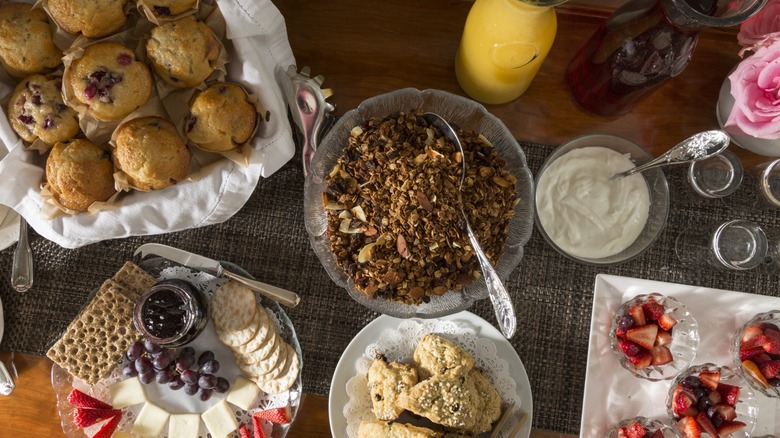This Old School Poor Man's Breakfast Used To Be A New England Staple
New England has a curious culinary history with blandness. In the 19th century, Reverend Sylvester Graham promoted the consumption of bland foods in the region, preaching it would help people lead a more moral life. It was already a popular notion during the Victorian era that soft, barely seasoned food was healthier for the sick, so dishes believed to be good for both body and soul became commonplace.
Milk toast — an inexpensive meal of toasted bread served in warm milk — was as much a New England staple as a simple bean sandwich. If that name sounds vaguely familiar, it's probably because you've encountered the word "milquetoast" before. The term refers to someone who is timid and inoffensive and is coined from 1920s comic character Caspar Milquetoast, who was, in turn, named after the similarly bland milk toast.
You can make milk toast using two slices of a hearty-but-not-too-flavorful bread (rye is out of the question) cut into cubes, slathered in butter, and lightly toasted. Warm milk is seasoned with salt and pepper to taste, then poured onto the toast. That last step is crucial since it helps the bread stay solid (rather than serving as a simple ingredient to thicken the soup). The end result is a lightly flavored bowl of what is, essentially, croutons in milk. It's as bland as New Englanders would've wanted it in the 1800s.
Modern takes on milk toast
Unsurprisingly, today's palates prefer a lot more flavor. Modern recipes for milk toast tend to add cinnamon and sugar to the mix, making it more of a breakfast item. Think Cinnamon Toast Crunch, but warm and hearty. Other takes add a touch of vanilla along with the sugar and spice, resulting in milk toast that tastes like bread pudding (without the thicker consistency of custard).
In recent years, a different spin on milk toast went viral. Instead of serving the bread in milk like cereal, you pour the milk directly onto the bread as it toasts in a pan. The bread soaks up the liquid as the milk caramelizes on the surface, giving you something similar to French toast sans poultry products — it's a fantastic breakfast dish if you hate eggs. For extra sweetness, top it with condensed milk, syrups, or fruits. Honey and chocolate are also popular toppings.
However, the traditional version is still worth trying since it offers a mix of textures we don't usually get these days. There's also something to be said about hearty, soupy foods where it isn't necessarily how it tastes that matters, but rather how it feels. The combination of warm, creamy milk and soaked-through buttery toast is the New England equivalent of a cozy hug on the coldest of mornings, giving you a tremendous amount of comfort in every spoonful.

